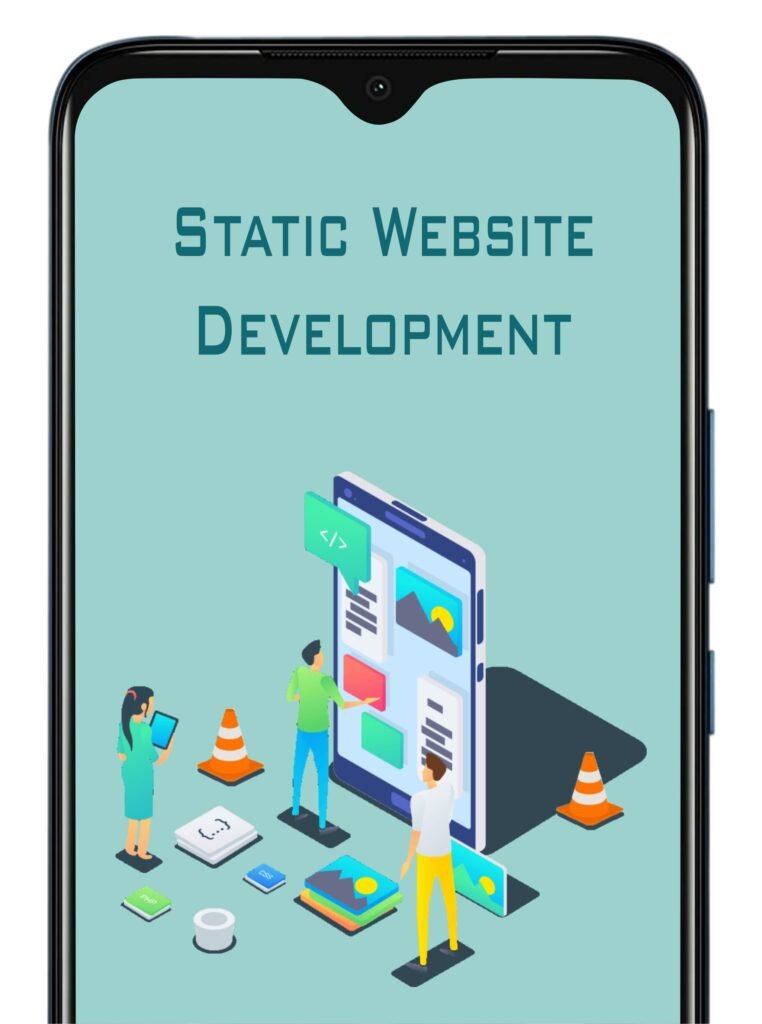Static Website Development
Digitize your brand with static website designs
Static website design refers to the creation of web pages that remain fixed and do not change content or appearance based on user input or other variables. Static websites are typically built using HTML (Hypertext Markup Language) and CSS (Cascading Style Sheets) without the need for server-side scripting or a database.

Here are some key points to consider when designing a static website:

HTML
Static websites are primarily built using HTML, which provides the structure and content of the web pages. HTML tags define elements such as headings, paragraphs, images, links, and other page components.

CSS
Cascading Style Sheets (CSS) are used to define the presentation and layout of the web pages. CSS controls aspects like fonts, colors, spacing, borders, and overall visual styling. It allows you to maintain a consistent design across multiple pages.

Design and Layout
Designing a static website involves creating an appealing visual layout using HTML and CSS. It includes decisions on color schemes, typography, imagery, and the overall organization of content. The goal is to create an intuitive and user-friendly interface.
Our Credential
1
+
Static Website Design
1
+
Dynamic Website Design
1
+
Customized website design
1
+
E commerce website Design
Navigation: Proper navigation is crucial for static websites to help users move between pages and access different sections of the site easily. Common navigation elements include menus, breadcrumbs, sidebars, and footer links. Consistent and logical navigation enhances the user experience.
Responsive Design: It is important to design static websites to be responsive, ensuring that they adapt and display correctly on various devices and screen sizes, including desktops, tablets, and smartphones. Responsive design is achieved through CSS media queries and flexible layouts.
Performance Optimization: Static websites tend to load faster compared to dynamic websites since there is no server-side processing involved. However, it is still important to optimize the website's performance by compressing images, minifying CSS and JavaScript files, and leveraging browser caching.
Content Updates: One limitation of static websites is that content updates require manual editing of HTML files. This can be time-consuming and may require technical knowledge. However, static site generators or content management systems (CMS) can be used to simplify content updates.
Hosting: Static websites can be hosted on any web server or even on a content delivery network (CDN). Since static websites do not require server-side processing, hosting costs are usually lower compared to dynamic websites.
Static websites are suitable for various purposes, such as portfolios, landing pages, informational sites, and small business websites that do not require frequent content updates or complex functionality. They are lightweight, easy to maintain, and can still provide a visually appealing and engaging user experience.
Static websites are suitable for various purposes, such as portfolios, landing pages, informational sites, and small business websites that do not require frequent content updates or complex functionality. They are lightweight, easy to maintain, and can still provide a visually appealing and engaging user experience.



